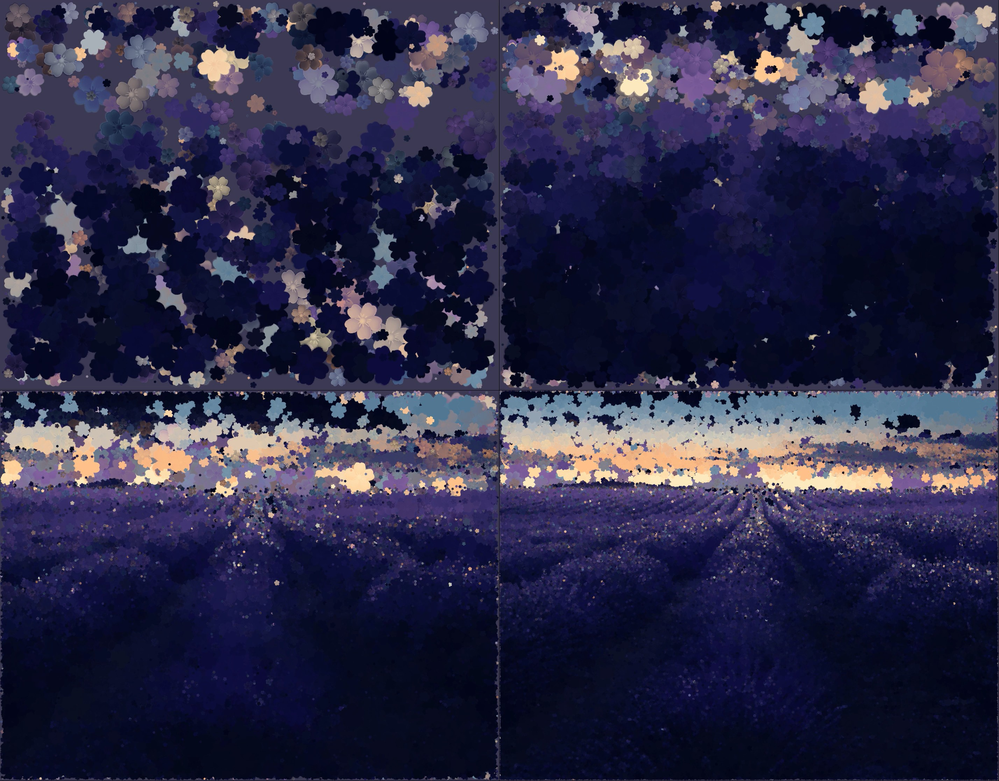Video: https://streamable.com/k6nkq
This is another take on https://www.reddit.com/r/programming/comments/bstbki/mona_lisa_made_out_of_260_smaller_mona_lisas, using a different method.
usage: transmogrify.py [-h] [-i ITERATIONS] [-c COLORS] -s SOURCE [-m MIN]
atoms [atoms ...]
transmogrify.py: error: the following arguments are required: -s/--source, atoms
where SOURCE is an RGB image and each atom is a RGBA image. The output (STDOUT) is a stream of PNGs, which may piped to ffmpeg or a different encoder.
The following command should produce an MP4/H264 video compatible with WhatsApp / Android.
python3 -Bu transmogrify.py -s example/lavender.png blossom.png | ffmpeg -f image2pipe -i - -vf "pad=ceil(iw/2)*2:ceil(ih/2)*2" -c:v libx264 -profile:v baseline -level 3.0 -pix_fmt yuv420p lavender.mp4
Even though this problem can be solved using genetic algorithms (as described in the reddit thread linked above), a simple combination of k-Means and Hill Climbing suffices to produce effective results:
- Compute a limited palette of
kdominant colors using k-Means. This is basically color quantization. - Fill the background of the output with the mean color. This speeds up convergence a bit.
- Select a random atom (constituent image), apply a random affine transform (translation + rotation), colorize the atom using a one of the palette's colors.
- Optimize the squared loss between source and output using hill climbing.
- The color quantization step is very slow on large images, so we apply it to a downscaled version of the source image if it is larger than 256x256
- The hill climbing is slow due to its sequential nature (Perhaps it is possible to parallelize using Beam Search?)
- As the level of detail increases, successive moves to lower-energy states become more difficult as the likelihood of producing energy-reducing affine transforms becomes lower and lower.
Credit goes to Grafixart-Photo on reddit for "The Lavender Field of Valensole"
